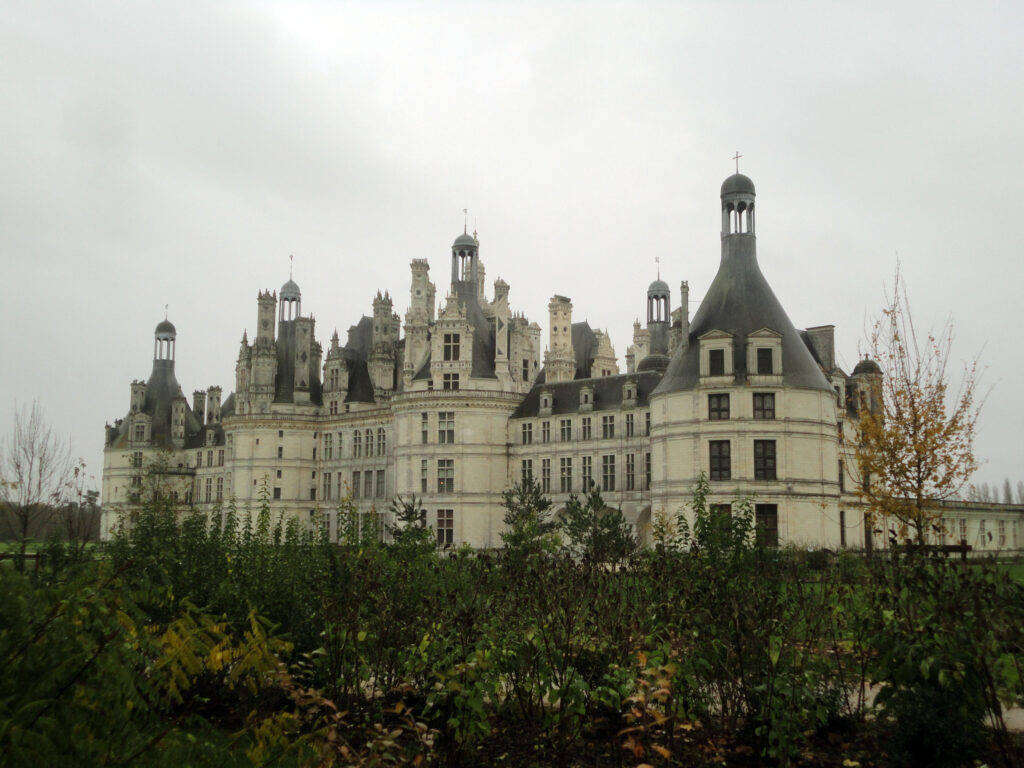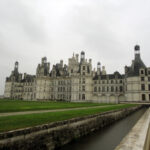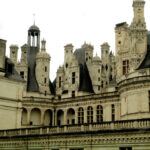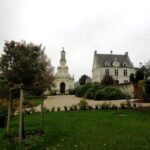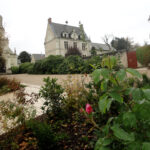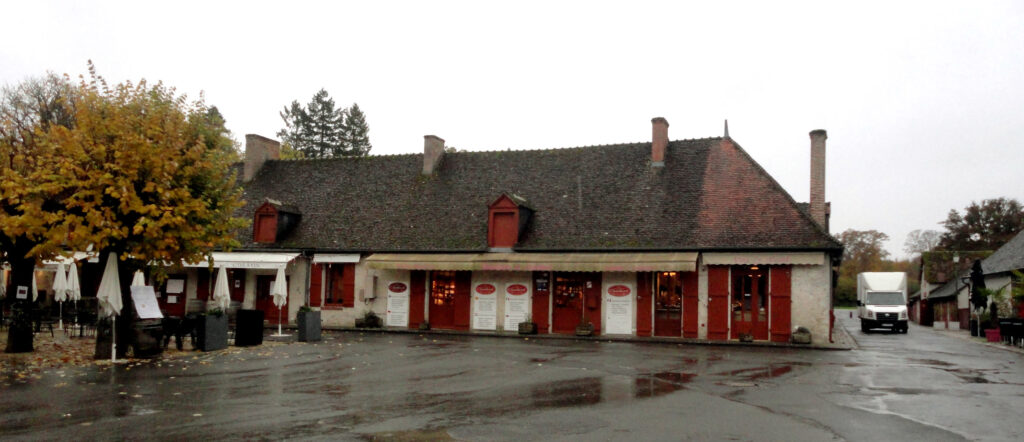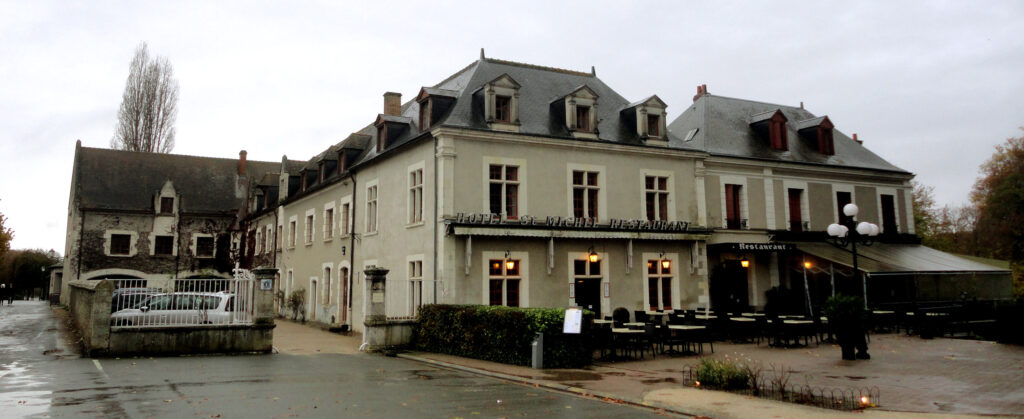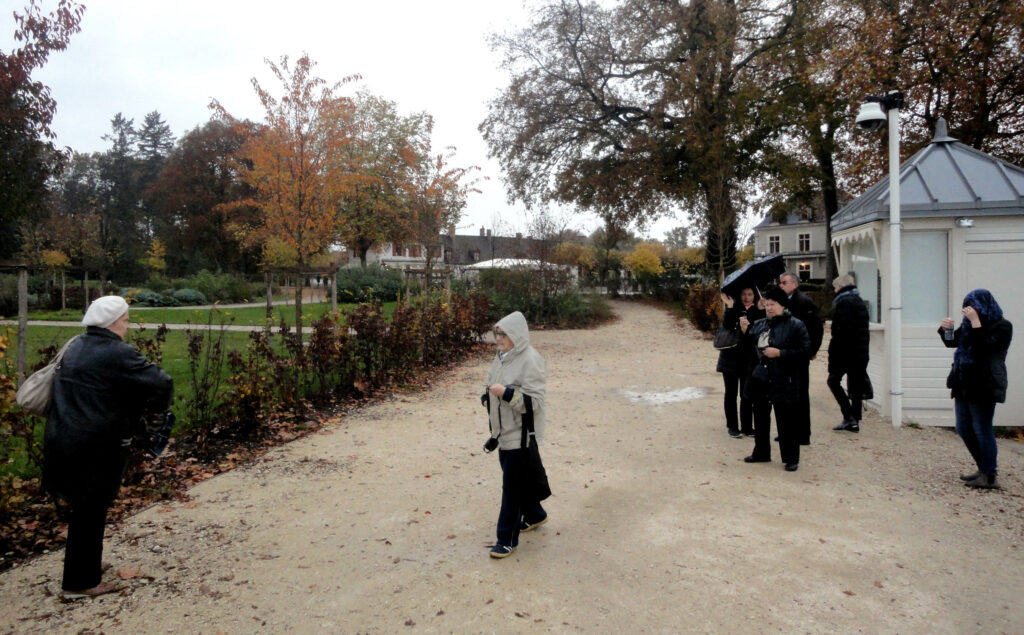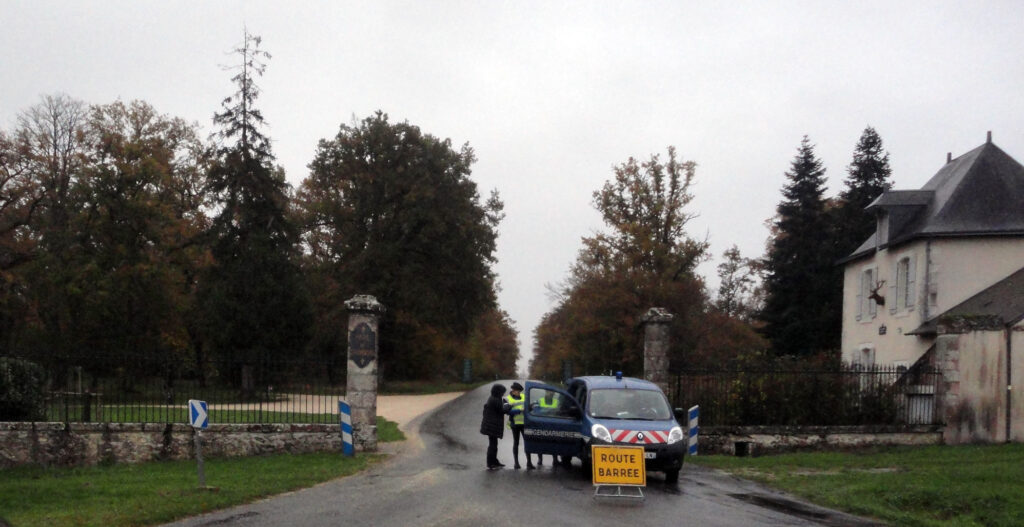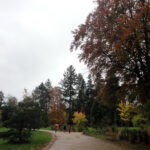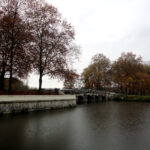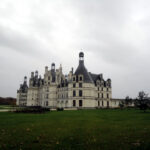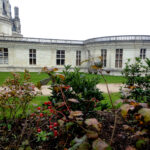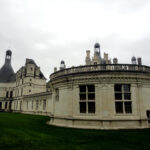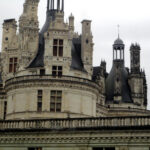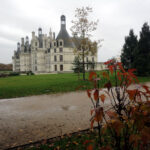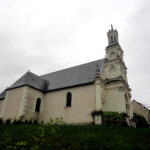The most beautiful, famous and interesting castles in the Loire Valley, a short guide book.
Chambord hunting castle for Kings of France.
The Royal Castle of Chambord (in French Château de Chambord) is located in the Central region of France and is one of the most famous castles in the world due to its very distinctive French Renaissance architecture, combining traditional French medieval forms. with classical renaissance structures. The building, which was never completed, was built by Francis I. Chambord is located in the orange zone closest to Paris, see Loire Valley castle map
Chambord is the largest castle in the Loire Valley; it was built as a hunting lodge for Francis I, who maintained his royal residences at Château de Blois and Amboise. The original design of Chambord Castle is attributed to the Italian architect Domenico da Cortona; Leonardo da Vinci may also have been involved or influenced the design.
Chambord was significantly modified during the twenty-eight years of its construction (1519–1547), during which it was under the supervision of Pierre Nepveu. As the castle neared completion, Francis displayed his great symbol of wealth and power by receiving his old arch-rival, Emperor Charles V, into Chambord.
In 1792, after the French Revolution, some of the furniture was sold and the wood was removed. For some time the building remained abandoned, although attempts were made to restore it in the 19th century. During World War II, works of art from the collections of the Louvre and the Château de Compiègne were moved to the Château de Chambord. The castle is currently open to the public, with 700,000 visitors in 2007. A flood in June 2016 damaged the grounds, but not the castle itself.
Architecture as designed. Castles in the 16th century moved away from fortress architecture; they had branches, with the features usually associated with them, they no longer had serious protection. Extensive gardens and water features such as a moat were common in castles of this period. Chambord is no exception to this type. The layout resembles a typical castle with a citadel, corner towers and a protected moat. Built in Renaissance style, the interior layout is an early example of the French and Italian style of grouping rooms into separate apartments, a departure from the medieval style of corridor rooms. The massive castle consists of: a central fortress with four huge bastion towers at the corners. The tower is also part of the front wall of a larger complex with two more large towers. The bases for a possible additional two towers are at the rear, but these were never built and remain at the same height as the wall. The castle has 440 rooms, 282 fireplaces and 84 staircases. Four rectangular vaulted corridors on each floor form a cruciform shape.
The castle was never meant to be a defense against enemies; hence the walls, towers and partial moat were decorative and even at the time anachronistic. Some elements of the architecture – open windows, a loggia and a vast open area above – borrowed from the architecture of the Italian Renaissance – are less practical in cold and damp northern France.
Carefully thought out roof line. The façade of the tower is asymmetrical except for the northwest façade, which was recently changed when two wings were added to the castle.
The landscape of Chambord’s roof contrasts with the mass of its masonry and is often compared to the skyline of the city: it shows eleven types of towers and three types of chimneys without symmetry, flanked at the corners by massive towers. Design parallels are Northern Italian and Leonard. Writer Henry James observed that “towers, domes, gables, lanterns, chimneys are more like the spiers of a city than like the protruding parts of a single building.
One of the architectural highlights is the impressive open double spiral staircase that forms the centerpiece of the castle. Two spirals rise up three floors, never meeting each other, lit from above by a kind of beacon on the highest point of the castle. There are suggestions that Leonardo da Vinci could have designed the stairs, but this has not yet been confirmed. The writer John Evelyn said of the stairs “it consists of four entrances or rises which intersect each other, so that although four people meet, they never come into view, except through small slits, until they land. It consists of 274 steps (as far as I remember) and it is an extraordinary work, but much more expensive than use or beauty.”
The castle also has a 128-meter façade, over 800 sculpted columns and an elaborately decorated roof. When Francis I commissioned the construction of Chambord, he wanted it to look like a panorama of Constantinople.
The castle is surrounded by a 52.5 square kilometers (13,000 acres) forest park and a red deer sanctuary surrounded by a 31 km (19 mile) wall. The king’s plan to divert the Loire in order to surround the castle only materialized in the novel; Amadis of Gaul, translated by Francis. In the novel, the castle is referred to as Brand Island Palace.
The towers of Chambord are atypical of modern French design in that they lack turrets and spiers. According to author Tanaka, who suggests that Leonardo da Vinci was an influence on the design of the castle, they are closer in design to the minarets of Milan in the 15th century. The design and architecture of the castle inspired William Henry Crossland to create the so-called Founder’s Building of the University of London at Royal Holloway. The Founder’s Building has very similar towers and layout, but was built in red brick.
The Royal possessions. Who designed the Château de Chambord remains a matter of controversy. The original design is credited, albeit with some doubt, to Domenico da Cortona, whose wooden design model survived long enough to be painted by André Félibien in the 17th century. On the layout drawings, the main staircase of the tower is shown with two straight parallel flights of steps separated by a passage and located in one of the arms of the cross. According to Jean Guillaume, this Italian design was later replaced by a centrally located spiral staircase similar to that of Blois and a design more consistent with the French preference for spectacular grand staircases. However, “at the same time, the result was a triumph of central planning – an entirely Italian element in itself.” In 1913, Marcel Reymond suggested that Leonardo da Vinci, Francis’s guest at Clos Lucé near Amboise, was responsible for the original design, which reflects Leonardo’s plans for a castle at Romorantin for the king’s mother, as well as his interests in central planning and double spiral staircases; the discussion is not yet complete, although many scholars now agree that Leonardo was at least responsible for the design of the central staircase.
Archaeological finds by Jean-Sylvain Caillou & Dominic Hofbauer have established that the lack of symmetry of some of the façades stems from an original design abandoned shortly after construction began, and the floor plan was organized around a central staircase according to central rotational symmetry . This rotating design is unparalleled in the architecture of that period of history and is reminiscent of Leonardo da Vinci’s work on hydraulic turbines or a helicopter. It is believed that if it had been respected, this unique building could have had an open staircase with four screws, oddly described by John Evelyn and Andrea Palladio, although it was never built.
Regardless of who designed the castle, on September 6, 1519, Francis Pombrian was ordered to start building the castle of Chambord. Work was interrupted by the Italian War of 1521–1526, and work was slowed down by depletion of royal funds and difficulties in laying the structure’s foundations. By 1524 the walls barely rose above ground level. Construction resumed in September 1526, when 1800 workers were employed in the construction of the castle. At the time of the death of King Francis I in 1547, the work was worth 444,070 livres.
The castle was built as a hunting lodge for King Francis I while on short hunting visits, however the king spent only seven weeks there. Massive rooms, open windows and high ceilings meant that heating was impractical. Likewise, since the castle was not surrounded by a village or estate, there was no immediate source of food other than game. This meant that all food had to be brought in with a group, usually up to 2,000 people at a time.
As a result of all of the above, during this period the castle was completely unfurnished. All furniture, wall coverings, food utensils, etc. were brought specifically for each hunt, which was an important logistical event. It is for this reason that much of the furniture from that era was built to be dismantled to facilitate transportation. After Francis died of a heart attack in 1547, the castle remained unused for almost a century.
More than 80 years after the death of King Francis I, the French kings abandoned the castle, which led to its destruction. Finally, in 1639, King Louis XIII handed it over to his brother Gaston d’Orleans, who saved the castle from ruin by carrying out a major restoration.
King Louis XIV restored the large fortress and furnished the royal apartments. The king then added a stable for 1,200 horses, allowing him to use the castle as a hunting lodge and entertainment venue for several weeks each year. Nevertheless, Louis XIV left the castle in 1685.
From 1725 to 1733, Stanisław Leshchinsky (Stanisław I), the deposed king of Poland and father-in-law of King Louis XV, lived in Chambord. In 1745, as a reward for valor, the king gave the castle to Maurice de Sachs, marshal of France, who stationed his military regiment here. Maurice de Sachs died in 1750, and once again the colossal castle was empty for many years.
French Revolution and the Modern History
In 1792 the revolutionary government ordered the sale of furniture; the wall paneling was removed and even the floors were stripped and sold for the value of their wood, and according to de la Saussay the paneled doors were burned to keep the rooms warm during the sales; the empty castle remained abandoned until Napoleon Bonaparte gave it to his subordinate Louis Alexandre Berthier. Subsequently, the castle was purchased from his widow for the young Duke of Bordeaux, Henri Charles Dieudonnet (1820–1883), who took the title of Comte de Chambord. A brief attempt at restoration and occupation was made by his grandfather King Charles X (1824–1830), but both were expelled in 1830. In Outre-Mer: A Pilgrimage Across the Sea, published in the 1830s, Henry Wadsworth Longfellow noted the decay that had begun: “Everything is sad and desolate. The grass has grown over the sidewalk in the courtyard, and the rough sculpture above it.” the walls are broken and disfigured.”
During the Franco-Prussian War (1870–1871) the castle was used as a field hospital.
The last attempt to use the colossus was made by the Comte de Chambord, but after his death in 1883, the castle was left to his sister’s heirs, the titular Dukes of Parma, who lived at that time in Austria. First he went to Robert, Duke of Parma, who died in 1907, and after him to Elias, Prince of Parma. Any attempts at restoration ended with the outbreak of the First World War in 1914. The Château de Chambord was confiscated as enemy property in 1915, but the family of the Duke of Parma filed a claim for its return, and this claim was not settled until 1932; Restoration work began only a few years after the end of World War II in 1945. The castle and surrounding areas, about 5,440 hectares (13,400 acres; 21.0 sq mi), have belonged to the French state since 1930.
In 1939, shortly before the start of World War II, the art collections from the Louvre and Compiègne museums (including the Mona Lisa and the Venus de Milo) were kept at the Château de Chambord. On June 22, 1944, an American B-24 Liberator bomber crashed on the castle lawn. The image of the castle has been widely used to sell goods from chocolate to alcohol and porcelain to alarm clocks; Combined with various written reports from visitors, this has made Chambord one of the most famous examples of French architectural history. Today, Chambord is the main attraction of the Loire Valley, and in 2007 it was visited by about 700,000 people. Following unusually heavy rains, Chambord was closed to the public from June 1 to June 6, 2016. The Cosson River, a tributary of the Loire, flooded its banks and the moat of the castle. Drone photos captured some of the peak floods. The French Heritage Foundation described the aftermath of the flood on a 13,000-acre site in Chambord. The 20-kilometer wall around the castle was broken in several places, the metal gates were torn out of the frame, the roads were damaged. In addition, trees were uprooted and some electrical and fire protection systems were disabled. However, the castle itself and its collections were reportedly unaffected. The Foundation observed that, paradoxically, the natural disaster affected Francis I’s vision that Chambord appears to be rising from the waters as if it were deflecting the Loire. The repairs are expected to cost more than a quarter of a million dollars.
- Canal to the castle of Chambord
- original castle roof architecture
- park, forest, estate
- flowers in the park in autumn, november
Interesting facts about the castle. When the architects planned to build a castle, they wanted to make a real fortress out of it. The walls are thick, the ceilings are high, the halls are all damp and cold, which were supposed to be heated by 365 fireplaces.
Chambord Castle consists of three floors and contains more than 440 rooms. Later in the process of work, they wanted to make it more comfortable and decorate the interior, but still it looks like a fortification from enemies, and not a resting place. The heart of the castle is the donjon – a square room with round towers at the corners. A double spiral staircase in the center of the castle rises from the ground floor to a skylight on the roof. Each spiral march has its own entrance. Climbing along “your” spiral, you can see those walking along the other only through small windows into which tourists like to say “cuckoo”. According to legend, this was also conceived by Leonardo da Vinci himself. All apartments on different floors of the donjon overlook the interior and form a cross with a staircase in the middle. For the convenience of visitors, signs are hung in the castle.
Castle guide, brief extract.
Ground floor of Chambord castle. Here is the entrance to the chapel (western wing), the entrance to the eastern (“royal”) wing, an exhibition of carriages and sculptures.
Second floor. The chambers of Francis I are located in the east wing. they are easy to detect by lilies and salamanders – royal heraldic symbols, located on the exterior and interior of the rooms. The King’s Hall then occupied the entire wing. In the 17th century it was divided into several rooms. The rooms reproduce the furnishings of the 16th century with beds, chests and fireplaces. The chambers of Louis XIV are a suite of small rooms running along the main facade from the east tower of the donjon to the west. All of them are furnished according to that era. Tapestries and portraits of historical figures hang on the walls. There is also a bust of Louis.
The Royal Chapel (you can enter it from the first floor) was built under Francisco, and was completed under Louis (architect J.A. Mansart).
The other two towers (south half) house 18th-century apartments with Enlightenment furnishings. There is also a small Museum of the Count of Chambord, the last owner of the castle and a direct descendant of Louis XVI.
Third floor of Chambord Castle Tour. Museum of hunting and nature. There is a large collection of weapons and paintings by animal artists. The main idea of the exposition is to show how hunting has turned from a way of survival into cruel entertainment for the rich. The museum itself is housed in a room with coffered vestibule ceilings and decorations in the form of salamanders with the letter “F” in the name of Francis.
Terrace of Chambord castle. This is a toy town on the roof of the castle with its streets and squares formed by spiers, chimneys and towers. The center of the town is a 32-meter-high skylight located at the top of a spiral staircase. The towers are covered with black slate, which gleams in the sun with the color of blued steel. The town was a favorite place for women to walk while their husbands were out hunting.
Park and hunting grounds The park around Chambord Castle has an area of 5,441 hectares, of which 1,000 hectares are open to the public – this is the largest enclosed forest-type park in Europe. The symbols of the park are deer and wild boar; more than 100 species of birds live here. The length of the fence is 32 km. Local authorities sometimes close the park and the castle for “special events” without warning the tour operators and arrange a “royal” hunt for officials, much to the displeasure of representatives of the tourism industry.
Chambord Castle opening hours:
from January 02 to March 31 and from October 01 to December 31: from 09:00 to 17:00;
from April 01 to September 30: from 09 to 18 hours.
Practical information:
Entrance of visitors to the castle stops half an hour before it closes
Free storage for large backpacks
No pets allowed in the castle
On the territory of the castle, a nightly theatrical performance “Le metamorphoses de Chambord” is sometimes arranged (June, July daily 22.30-00.00, August 22.00-23.00, September 21.30-23.00)
Bicycle rental available (next to the Château at Pont Saint-Michel)
Shows of the School of Equestrian Dressage (Ecuries du Marechal de Saxe official website chambord-horse-show.fr May, June, September Monday-Friday 11.45 am, Saturday Sunday 11.45 am and 4.00 pm, July, August daily 11.45 am and 5.00 pm, duration 45 minutes)
Accessible for people with disabilities.
Chambord Castle, entrance ticket prices
Entrance tickets – full fare: price 11 €. Group fare: ticket price 9 € (groups from 20 people)
Tariffs are valid until December 31
Admission is free: for EU citizens under the age of 25 and for French primary and secondary school teachers.
Parking at Chambord Castle, prices. Cars (motorcycles): 6 € per day
Van (vehicle length < 7 m. 90 cm): 7 € per day (11 € per night)
Bus (vehicle length > 7 m 90 cm): 50 € per day. Free parking for buses of tour groups visiting the castle.
Interesting places, what else to visit in Chambord Castle.
Near the entrance to the territory of Chambord Castle there are restaurants and shops where after the tour you can buy souvenirs, dine (French and European cuisine), drink wine or champagne according to the French tradition.
Confectionery near the castle of Chambord, where you can buy various sweets (look at the google map on the map). Great place to buy gifts for kids and friends. Alas, the photo was taken during the group tour “Three castles in one day”, so it was impossible to visit the pastry shop. Only for private tours.
Chambord Castle restaurants, cafes, pubs, hotels
Restaurant and Hotel St. Michael. Here you can have a quick meal, French cuisine, Loire wines, champagne.
Hotels at Chambord Castle, surroundings
Accommodation in Chambord castle complex, hotels in the Loire Valley. Since 2013, the Chambord National Castle Complex has been providing tourists with the opportunity to stay on its own and adjacent territory.
Weekend rest in the Castle and the national park. You can come to Chambord Castle for the weekend or a whole week, staying in a cozy estate, a few meters from the castle itself or at the entrance to the park complex.
“LA GABILERE“, porte Muid. L’entrée du complexe
For lovers of WW2 battlefield toursю
“La Maison FORESTIERE DE REFRAKTER” – “House of the Unconquered”
200 meters from the castle, the “Partisan Village” of World War II.
The forest estate (“House of the Unconquered”) is located in a forested area. It got its name in memory of those local residents of Chambord, who during the Second World War went into the forests and hid from the Germans so as not to work at their enterprises, not to serve the German “labor service”. So to speak Resistance on the labor front. This “guerrilla village” in the forest includes two separate houses for up to 8 people, 4 bedrooms with 2 single beds, a shared bathroom on the floor and a kitchen on the ground floor. There is a garden in the yard, parking, garage and furniture for relaxing in the garden
Accommodation for the week: check-out time 16.00 (Saturday) to 10.00 (Saturday)
Weekend accommodation: from 16.00 (Saturday) to 20.00 (Sunday)
- Loire Valley sightseeing private tours from Paris or Charles de Gaulle by car with a guide, according to the classic programs “Three castles in one day” and unusual individual routes, including WW2 battlefield trips
Trip adviser. Useful tips and reviews about the castle, and suddenly come in handy.
If you booked an individual (small-group) tour in autumn or winter, then when it rains you can sit in a local restaurant for half an hour, appreciate French cuisine, commemorate local WW2 partisans and underground fighters. During this time, the rain will end and you can continue the tour around the castle.
Chambord Castle, reviews
November 14, 2014. The police blocked the entrance to Chambord Castle without any warning. Some kind of minister decided to hunt in the state hunting farm. We lost almost an hour. Without warning, the local “kings” arrange a “royal” hunt for themselves and block the entrance to Chambord Castle by the gendarmerie without any explanation or apology. A group tour from Paris for a whole bus breaks down.
Useful tips and reviews. If your trip takes place in autumn or winter, when it sometimes rains, do not forget to take an umbrella with you. The weather in Paris can be very different from the weather in the Loire Valley. Check the forecast for specific settlements – Chambord, Amboise, Chenonceau as well as the time when it is sunny and when it rains. In summer it is usually sunny. A gravel road leads from the ticket office turnstiles to the royal wing of the castle. There is an information office at the entrance where you can rent an audio guide or a free brochure in English.
Chambord Castle and youth organizations.
In 2007, 17,300 Scouts spent three days celebrating the centenary of Lord Baden Powell’s founding of the Scout organization in the castle park.
Chambord Castle in autumn, reviews. park and forest
Trip from Paris to the Loire Valley in November autumn 2014. Photo by M. Blinov.
Rainy autumn nostalgic weather. Favorite season for artists and poets. “A dull time, eyes of charm …”. In the photo – Chambord Castle during the rain, which did not last long, really. Stone bridge from the car park to the castle. Forested area near Chambord castle, green grass and yellow leaves – autumn.
- Park alley, forest and yellow leaves
- Stone bridge, pond and river
- View of the castle in November
- Flowers and berries near the tower
- Tower and observation deck
- Castle tower and roof decorations
- flowers and plants in the alleys in November
- Ancient bell tower and house
Here, during the Second World War, according to history, there were partisans and underground fighters, who were hunted by the Gestapo and punishers. These forests are now occasionally hunted by local French officials, much to the annoyance of tourists. Park near the castle and a view of one of the hotels in the area where you can stay for the night.
Here is such an autumn and winter on the Loire – even in November, flowers are visible on the alleys of the park, and next to the evergreens, leaves fall on other trees. Great time for artists, poets and lovers of hot wine.

